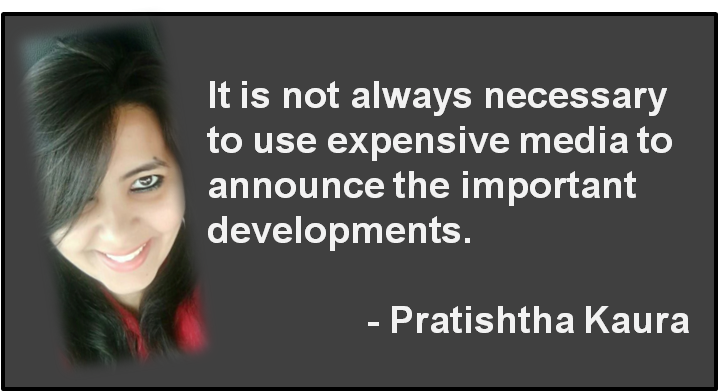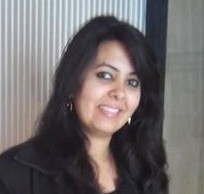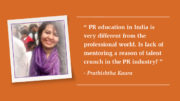‘There’s no such thing as bad publicity’
Phineas T. Barnum, the 19th century American showman
The past month saw a head-spinning conversation originating around an upcoming movie. Yes, I am talking about the grand publicity that the movie Udta Punjab seized a few days before its release. The war between Anurag Kashyap and Pahlaj Nihalani went wide when the Censor Board ordered as many as 89 cuts in the movie citing the reasons that it defamed the name of the state Punjab and projected the government in bad light. However, it was finally passed by the Bombay High Court two days before the release with only one cut. Nevertheless, the conversation sparked by the entire controversy across the various forms of media, was enough to pique the curiosity of everyone.
There are a few B-Schools who want PR case study to be formulated on how an opinion war and a perception battle was fought before the release of Udta Punjab. This entire issue gave the communication professionals, some major learnings on how to steer a sparking conversation with almost everyone forming a part of that. Let us have a look at them.
- Good research forms the foundation of a good campaign
Udta Punjab is based on the hitting drug menace that the state is actually suffering since a few years now. The AIIMS report estimates that there are over eight lakh drug users in Punjab and it reported earlier this year that the state consumes worth Rs.7,500 crores. The Indian Express carried out an investigative series on the Narco war that the state is facing and suffering from. The production team of Udta Punjab concluded its research and thereafter produced a work of fiction showcasing the subject of drugs peddling in the state.
Here comes the first and foremost learning – the importance of good research cannot be understated when coming up with any type of communication project. In fact, extensive and in-depth research forms a foundation of a good campaign.
- Twitter is enough to make headlines
Although at one point of time, Anurag Kashyap called the media at a press conference with eminent personalities from the film industry, he majorly used Twitter to express his intentions and the developments on the entire issue which was enough to make the headlines. For situations where he had to write text that could not confine the limit of 160 characters, he went to his Facebook page to voice his views.
This defines another learning – it is not always necessary to use expensive media to announce the important developments. Social media, in today’s times, is enough for the news channels to flash those ‘Breaking News’ and even stronger than the primitive tools.
- Influencers will talk if the message is strong enough
People like Arnab Goswami and Ravish Kumar on prime time talked about Udta Punjab and the growing menace. Leading newspapers reported extensively on the issue. On the first day, when the Censor Board asked to remove the word Punjab from the title, Arnab Goswami on his show, remarked sarcastically that the movies with the names of places in their titles should be renamed and thus the movie Bombay should only be called an exclamation mark ‘!’ and movies like Bombay to Goa as ‘To’!Even Gulzar, the 2014-receipient of Dadasaheb Phalke Award, the highest award in Indian cinema, spoke about the issue saying that the Censor Board should only grade and not ask for cuts.
The learning – influencers will talk about the subject if the message carries paramount significance. They will ensure that it is communicated to the audience at large and will make it a part of their conversations.
- Earned media still holds more significance than the paid media
The entire episode spurred several conversations on social media platforms. Everyone came to Facebook and Twitter to express their emotions of anger, concern, shock, belief and support. #UdtaNihalani, #UdtaCensor, #UdtaPunjabVerdict were some off shoots of #UdtaPunjabconversation which was trending for almost the entire week, not only creating buzz around the movie but also involving the people to be a part of the movement.
The learning – earned media is still known to create a better impact and a wider reach with an increased level of credibility. Also, it is worth mentioning here that the rise of user generated content cannot be ignored. This, in fact turns consumers into brand advocates further spreading goodwill through positive word of mouth for the brand.
- An industry standing together to fight against a crisis will address it head-on
When Pahlaj Nihalani ordered for the enormous amounts of cuts in the movie, he actually was able to achieve the unprecedented. He united the Bollywood veterans with the experimenting newbies as the very next day, Anurag Kashyap called a press conference where eminent faces such as Imtiaz Ali, Zoya Akhtar, Mahesh Bhatt, Mukesh Bhatt, Sudhir Mishra, Ekta Kapoor and Satish Kaushik were present – all on the same platform, fighting for a single cause which was the freedom of expression and creativity.
This makes us come to the conclusion and the learning that during the time of crisis, it is very important for the entire industry to stand together and fight against the common issue that the industry is facing – here, the issue being the censorship to curb the freedom of creative expression.
For us as communication professionals, there are situations when crisis hits a particular sector and we try to resolve it by taking the brand-focused approach, however the impact can be much wider in handling the crisis successfully if the entire industry comes together to take it head on. The latter situation is not only difficult to advise to the clients but is even tough to execute for the obvious reasons – every other brand in the industry is competition and standing with the competition in the middle of crisis can be a tricky and a risky situation. Hence, the PR recommendation will always depend on evaluating the crisis situation and formulating the strategy accordingly.
What are some learnings that you can think of? Would love to hear from you. Please comment here or tweet at @PR_wali







Be the first to comment on "Five Major Communication Learnings from the Udta Punjab Episode"